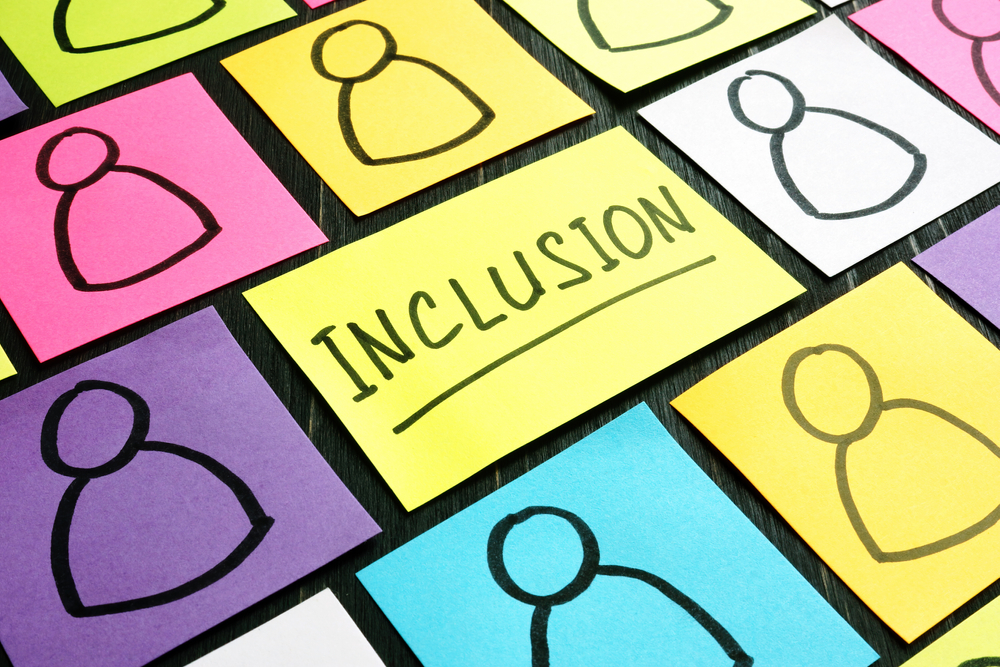The last year has been different. Not only because we have experienced a global pandemic but also finally because diversity, equity and inclusion have become regular, meaningful topics for conversation and not just a box that needs to be ticked by H.R.
Awareness of the importance of understanding D.E.I. has been raised as human beings worldwide watched the murder of George Floyd two months after Breonna Taylor was fatally shot in her apartment.
Lack of inclusivity is not exclusive to America.
Here in the U.K., there have been similar issues related to black lives matter and the ongoing realisation that women do not always have a voice.
A recent B.B.C. report shared that school pupils had made 8,000 allegations on a website gathering testimonies of sexual violence and abuse.
And a few days ago, I saw a comment from a colleague that groups of women around the country were dispersed, often forcibly by the police, for holding a vigil for Sarah Everard. Yet on the news coverage of the proposed European super league, scenes outside the big six football clubs saw hundreds of fans protesting; and there was no dispersion, no heavy police presence.
As I bring these more extreme examples to the front of your mind, how will you adapt your leadership to promote inclusivity as you work with your teams?
What is D.E.I.?

D.E.I. is a topic of conversation for all leaders. To be clear, diversity and equity relate to the inclusion of everyone, their viewpoints, and perspectives, alongside an equal representation of age, race, gender, socioeconomic status, religion, and political views.
It is critical that everyone has a voice and is heard. Equity asks us to acknowledge that everyone has different needs, experiences, and opportunities. People from marginalised groups often have more barriers to overcome when accessing resources and opportunities than those from dominant or more privileged groups.
Unfortunately, here is where ‘advantage blindness‘ kicks in and is more common than people realise. These are blind spots we can all have in our self-awareness about parts of ourselves outside of our conscious awareness that other people can easily see. A large percentage of the population have advantages that they take for granted.
During the pandemic, many individuals thought lockdown one was OK. The weather was good, and families could spend time in the garden and finish off various D.I.Y. projects, work from home in their spare bedroom and then watch Netflix with a glass of wine at night.
However, others living in a tower block with a broken lift, with only one room habitable because of damp, had a very different experience.
As we now appreciate this spectrum of experience that our employees have, let’s consider a common thread; the need to feel included.
What Makes Our Employees Feel Included?

In a post on hbr last year, the subject of inclusivity was discussed. Though being treated fairly, being valued, and working in a team where respect was natural were key elements, guess what the main driver was?
The behaviour of leaders, especially what they say and do, makes up to 70% difference as to whether individuals feel included.
The Upside of Inclusivity
There is a huge upside when you do the work surrounding your ability to demonstrate inclusivity to your team.
Here are a few classic occurrences you will notice.
- Communication up–levels and people share their ideas.
- Collaboration becomes the norm.
- Proactivity improves alongside increased productivity.
- Ultimately the butterfly effect occurs as organisational performance improves across all departments.
With so many positive results at stake when inclusivity is in place, where as a leader, should our focus be?
The Signature Signs of Inclusive Leaders

As with most leadership markers, inclusive leaders are committed. This looks like having the boldness to challenge everything while holding both self and others accountable.
Collaboration is also critical as empowerment is encouraged alongside building cohesive teams.
For many other leaders I talk to about this subject, curiosity comes next. As a leader, it is imperative to have a deep curiosity about others; to listen without judgment to every individual’s ideas, observations, and stories as you gain a deeper understanding of what is truly important to them.
Awareness of bias and humility comes next. Earlier, I mentioned ‘advantage blindness’ and how important it is to constantly check personal assumptions and become an observer of our own thoughts to shift our perspective.
It is a challenging arena we all now inhabit. And as we move forward, it is natural that mistakes will be made. We need to experience this with grace and humility as we ask for feedback from the individuals we want to feel included.
What Next?
Where will you start? How do you embody the signs I refer to above? At Zestfor, we help leaders become inclusive. We offer a range of programmes to help you become a better leader by developing critical leadership skills, including personal coaching and development programmes custom–built to suit your business‘s needs. Click here for more information about our leadership programmes.
Until next time,
Julia
About Zestfor
Zestfor specialises in developing Training programmes and resources scientifically tailored for technical markets – including Pharmaceutical, I.T., and Life Sciences.
Our blend of in-classroom, online, and virtual live-stream delivery methods will engage and assure even the most introverted team members from the first meeting – whether face-to-face or virtually. To have a brief chat, call us on 0845 548 0833. Alternatively, please email our team here.









